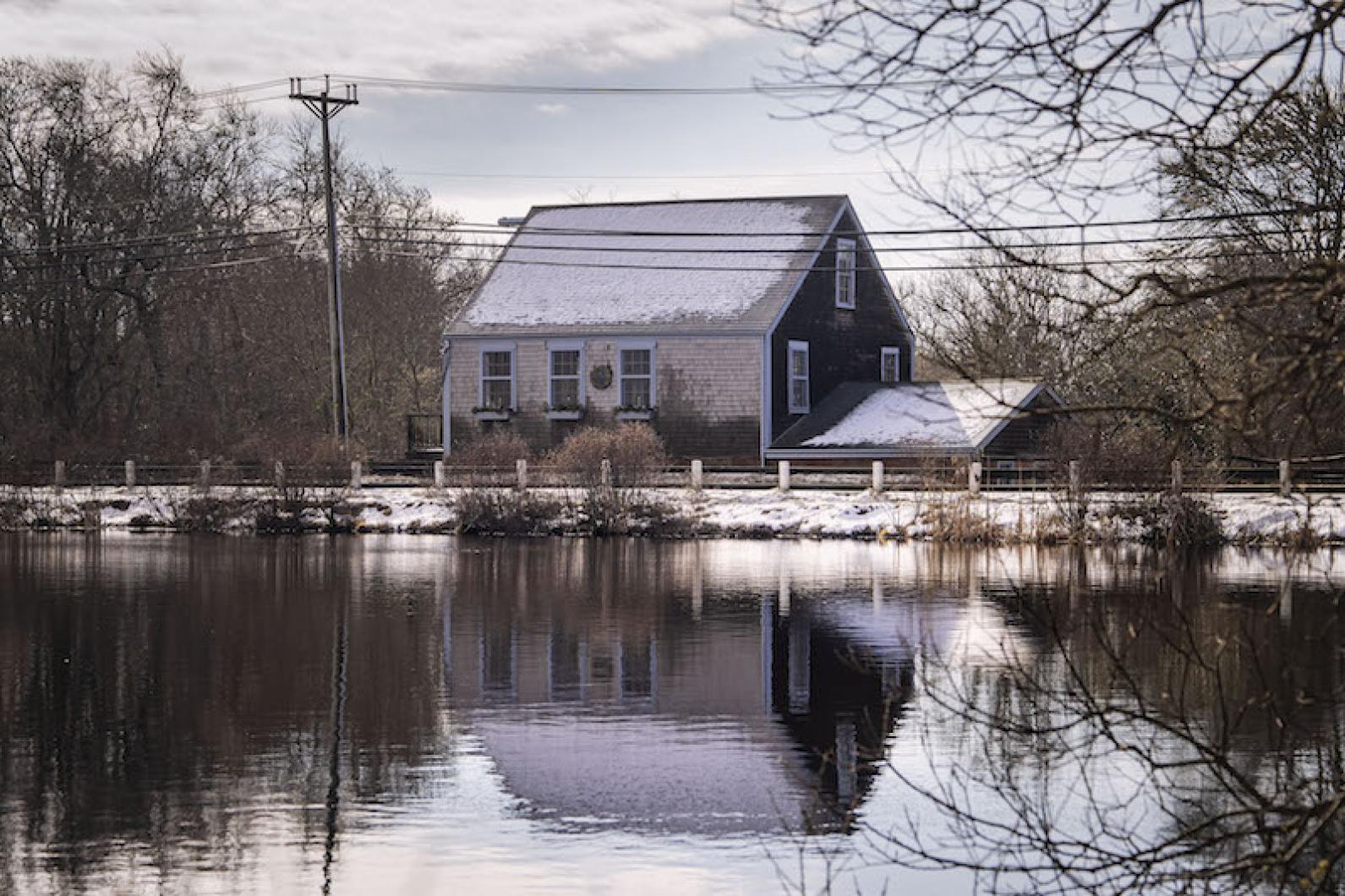The return of river herring to Martha’s Vineyard this spring is one of the rhythms of a natural world unaffected by a pandemic that has otherwise disrupted the patterns and rituals of so much of normal life.
Fresh from the sea and driven by the urge to spawn, herring will nose their way up the Mill Brook in West Tisbury. If the timing and conditions are right, a casual observer may be able to spot the silvery flash of a species vital to the marine environment swirling in the current at the base of a dam first built centuries ago to harness the free flow of the brook.
Juvenile American eels, known as elvers, the survivors of a perilous journey that began thousands of miles away in the Sargasso Sea, will also enter Mill Brook.
Elvers are capable of snaking their way up and over many obstacles. Years ago, I watched an elver — the creature was translucent and about five inches long — slither slowly up the vertical concrete wall of the obsolete Mill Pond dam. It was an impressive display of the power of natural instinct.
Adult eels, once a mainstay of Island diets and a commercial fishery, may live up to 25 years in the brook. At some point in its adult life span, the same instinct that propelled an eel up the brook will signal that it is time for this remarkable creature to embark on its epic return migration to spawn and die in its natal waters.
This month, the state Division of Fisheries and Wildlife stocked hatchery-raised brook trout in several Island water bodies including the Mill Pond. These piscatorial gladiators will face long odds in this shallow, manmade water body that has few of the natural characteristics their wild brethren up-stream rely on for survival.
When the stream water warms above 70 degrees, native brook trout, the genetic descendants of fish that arrived during the last ice age, must find refuge in spring-fed pockets of cold water or die. The temperature of the water spilling out of the pond last summer reached a high of 86.3 degrees, according to measurements taken at the time.
The Nature Conservancy, which has taken a prominent role in dam removal, says dams and levees pose some of the greatest threats to the health of rivers and wetlands, both globally and in the U.S.
Dams and failed culverts slow or block water flow, and that allows sediment to build up, changing stream ecology. Impoundments act as heat sinks that contribute to global warming. Water diversions sap flow. A watershed report on the Mill Brook done by the town and available online, spells it all out and includes recommendations.
About the time the progeny of the herring that spawned this spring are returning to the sea, the five-year battle over a multi-million dollar Martha’s Vineyard Regional High School plan to install five natural grass fields and one artificial turf field may or may not be concluded.
In recent testimony before the Martha’s Vineyard Commission, artificial turf opponents cited various environmental hazards, while proponents of the plan said artificial turf is used by sports programs around the country and poses no environmental hazards.
The arguments are heartfelt, each side invoking the environment. Plastic in all its forms is a concern. Reliance on fossil fuels is a concern. Apparently obsolete dams and the species they harm, not so much.
That any river herring, American eels and native brook trout manage to survive in the four-mile freshwater Mill Brook is a testament to the power of nature to overcome the obstacles Islanders created and continue to ignore. Irony swims in Vineyard waters.
Nelson Sigelman is the author of Martha’s Vineyard Fish Tales and lives in Vineyard Haven.




Comments (3)
Comments
Comment policy »